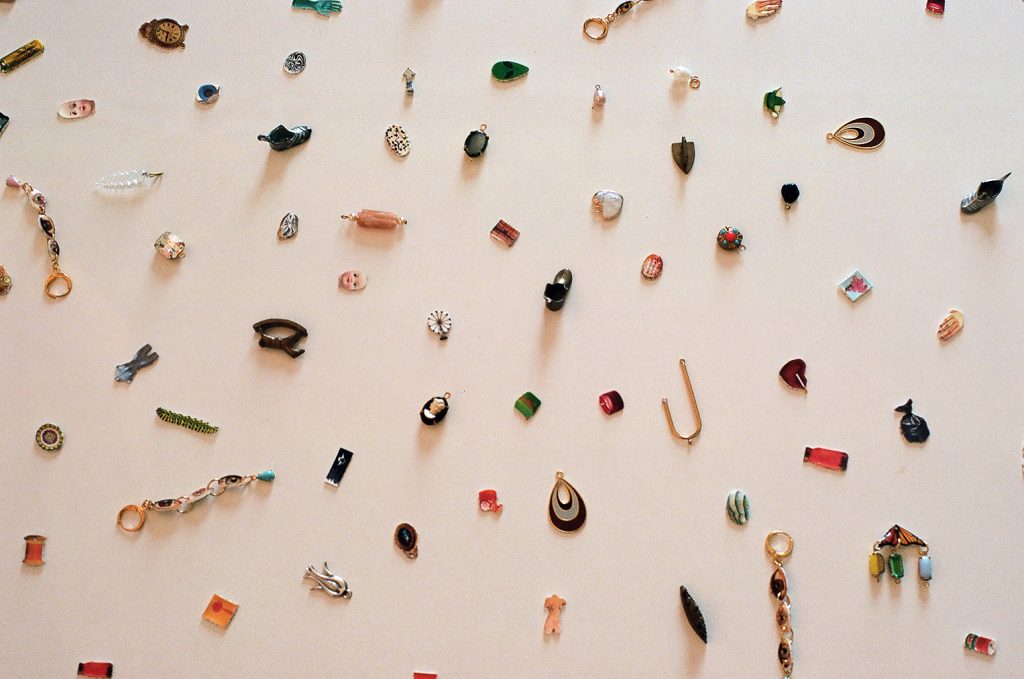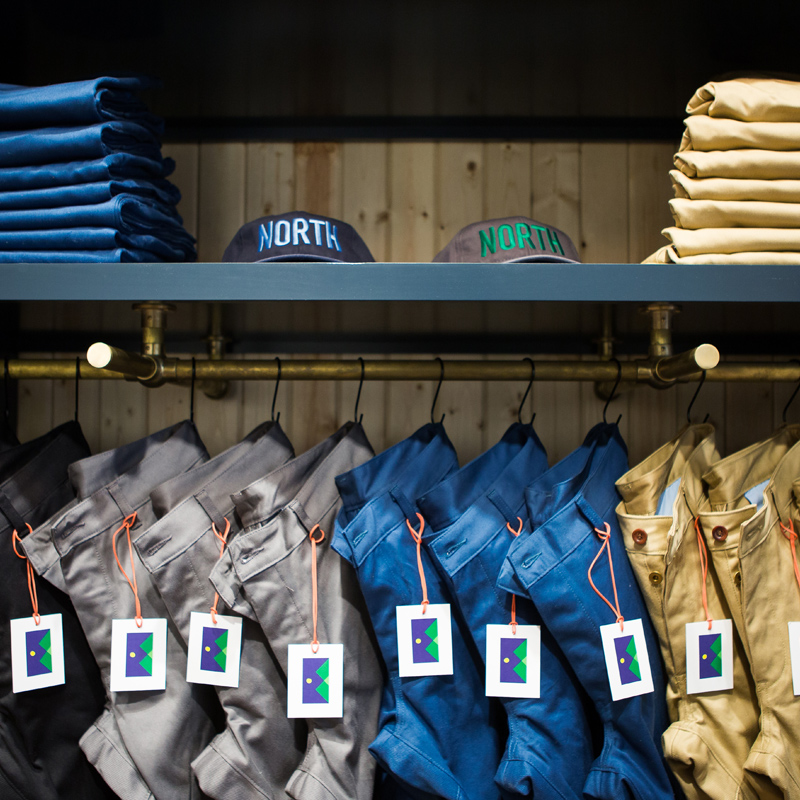Studio Visit: Zachary Armstrong
The Ohio-based artist speaks about the importance of taking on art like a kid as he heads to Art Basel Miami 2014

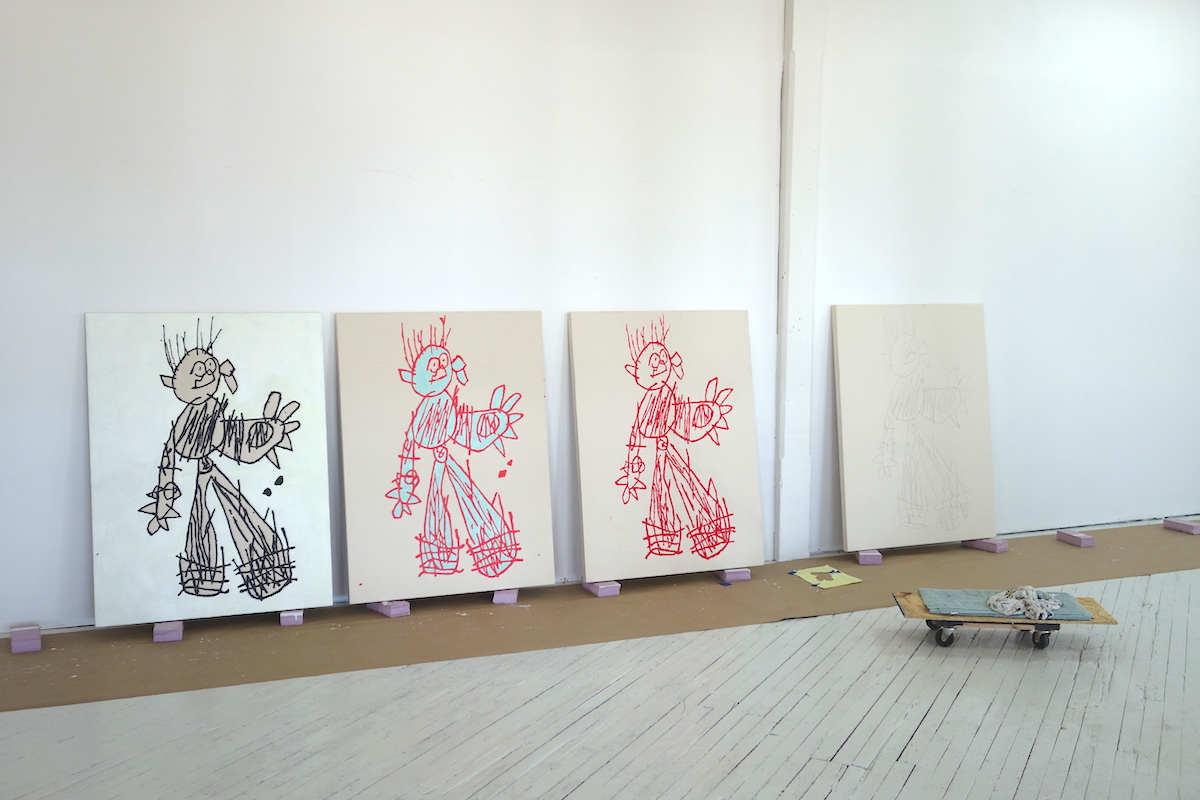
Zachary Armstrong has found a universal truth in his artwork—that a yearning for the open mind of childhood connects us all. Sitting in his light-filled studio in Dayton, Ohio, Armstrong is surrounded by relics of his own childhood, objects and drawings made by him and his family that have inherited such personal value that they have become the fundamental inspiration for his artwork. His pieces are full of ecstatic nostalgia, from his painted replicas of the dinosaur blankets that ubiquitously covered kids across America in the ’80s and ’90s, to enormous reproductions of monsters and self-portraits that Armstrong drew in his youth. It’s an intimate ode to Armstrong’s history, but one that invites his audience to recall their own upbringing and the material vestiges that represent boundless imagination. “I think people like the fact that they can recognize an image from their own childhood,” Armstrong tells CH, “and by turning it into art, it sort of makes it important.”
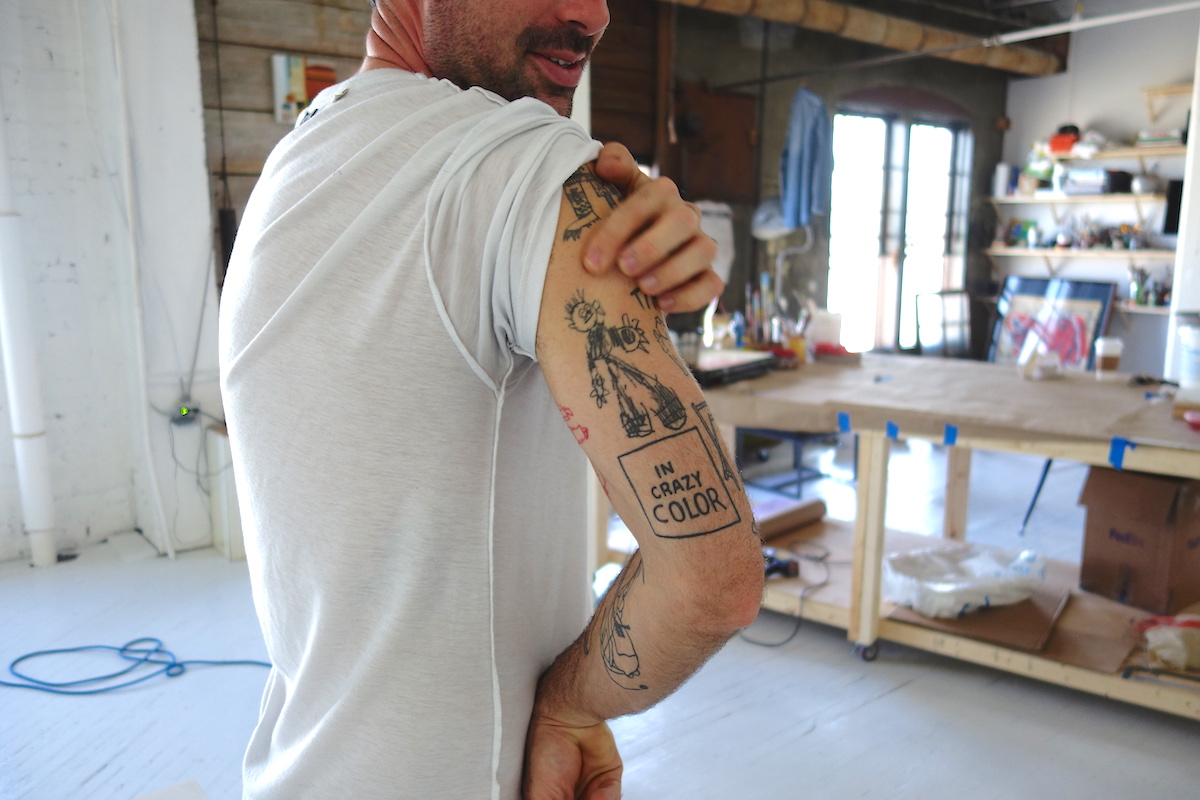
Armstrong often uses a projector to clone his work over and over again, drawing and painting along lines that he first etched over two decades ago. However, his process is deceptively complicated for what seems to be a simple study in repetition and memory. Each repeated image is filled with the power of recollection as expressed through methodical precision. “I spend about 12 hours a day in here,” Armstrong explains, noting that each day barely lets him get one part of the piece done. The dinosaur bed sheet reproductions, which appear conventionally juvenile, are actually some of Armstrong’s most-time consuming pieces, demanding total accuracy in his painting. “The hand-painted ones take a long time,” he says. “They look so simple, but it’s very meticulous, boring painting… the biggest one I worked on everyday for a month and a half.”
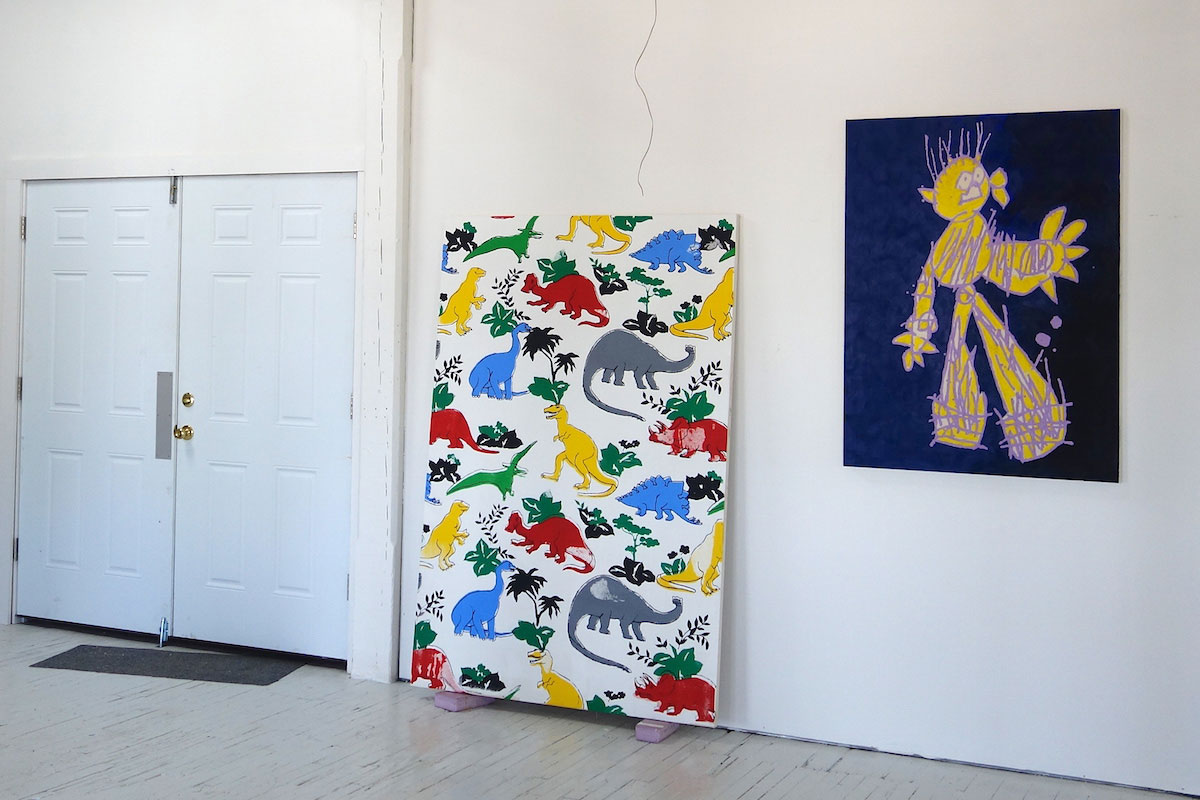
All painting really is is just problem solving. But you create and solve your own odd problems. It’s nice.
His use of repetition leads to a challenge that most would not assume: picking colors. As Armstrong says, “Well when you are making 20+ paintings of the same image, you’re bound to run out of colors and options, you know? The more you make of them, the harder it is.” However, Armstrong welcomes the obstacle, saying that each repetition forces him to learn something new, and therefore helps him grow as an artist. “All painting really is is just problem solving,” says Armstrong. “But you create and solve your own odd problems. It’s nice.” Repetition also has a much more profound intention for Armstrong—by returning to the work he’s created in his childhood, Armstrong is constantly trying to recapture the uninhibited spirit that seems to be lost in adulthood. To Armstrong, the uninhibited artwork of a child is the best art in the world because it is creation without the interference of judgement. It’s also essentially impossible for an adult to practice, which is why Armstrong is pursuing it as the epitome of art.
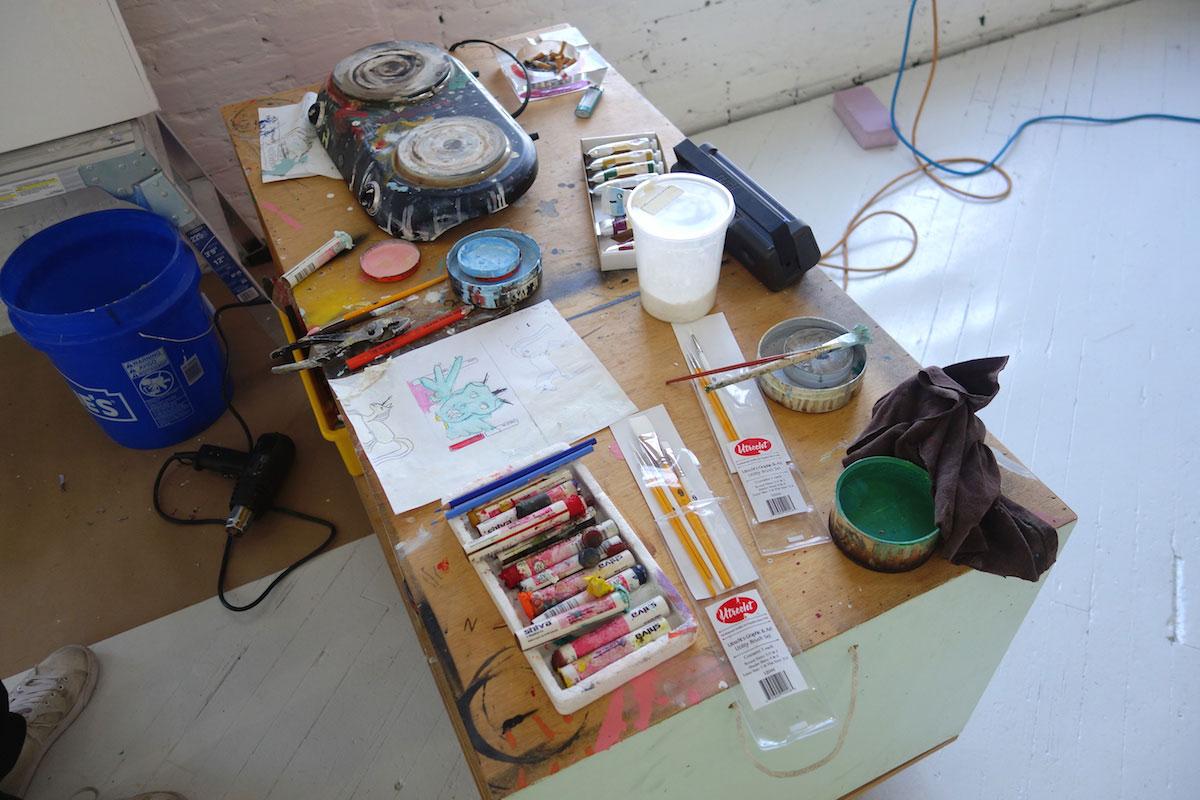
In fact, Armstrong uses drawings by his son or his friends’ children, encouraging the same unencumbered artistic expression that his father inspired. “My family has definitely been a huge influence,” says Armstrong. “And my dad raised both me and my brother in such a way that it was inevitable that we would both pursue some type of art. All I would read growing up was artists’ biographies.”
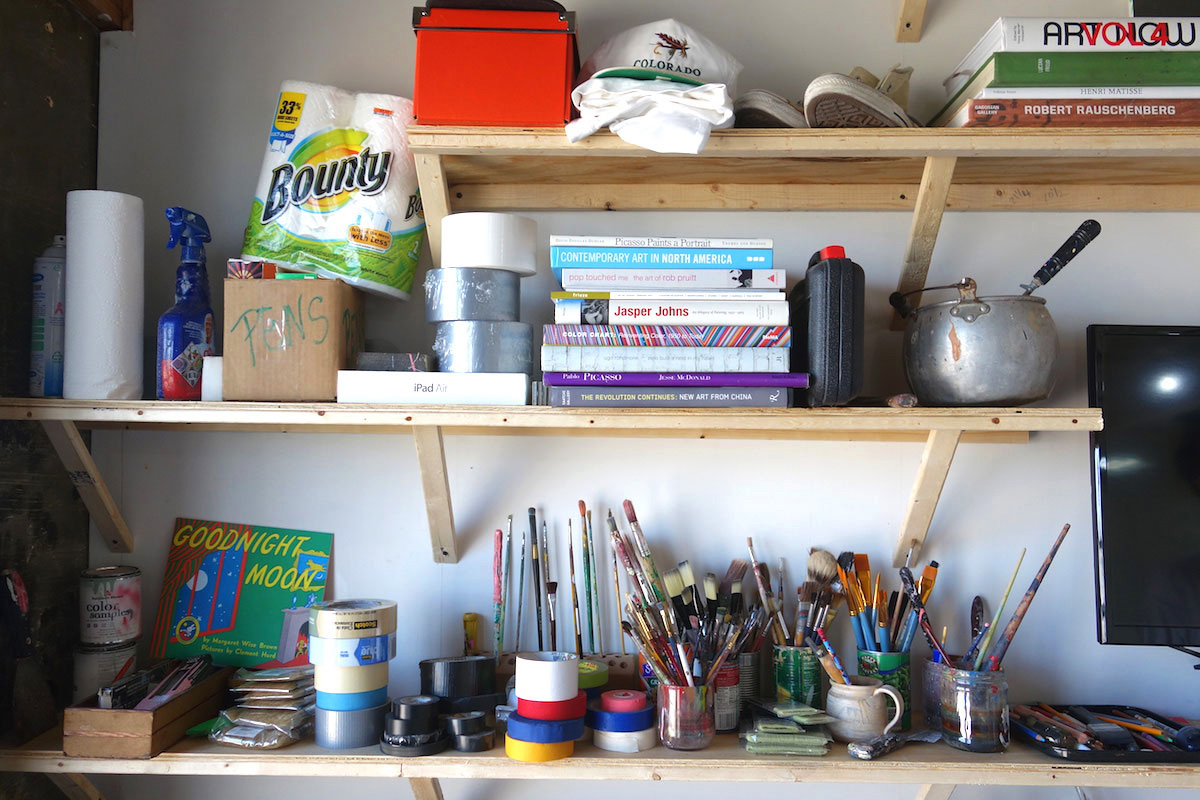
As an art teacher, his father always had an abundance of materials for the brothers to use, and Armstrong cites his brother as a constant inspiration. “My brother is older so I watched him progress, especially in art school. He makes the most beautiful paintings in the world,” Armstrong says. “I never went to art school, but being around my brother and dad constantly was just as good.”
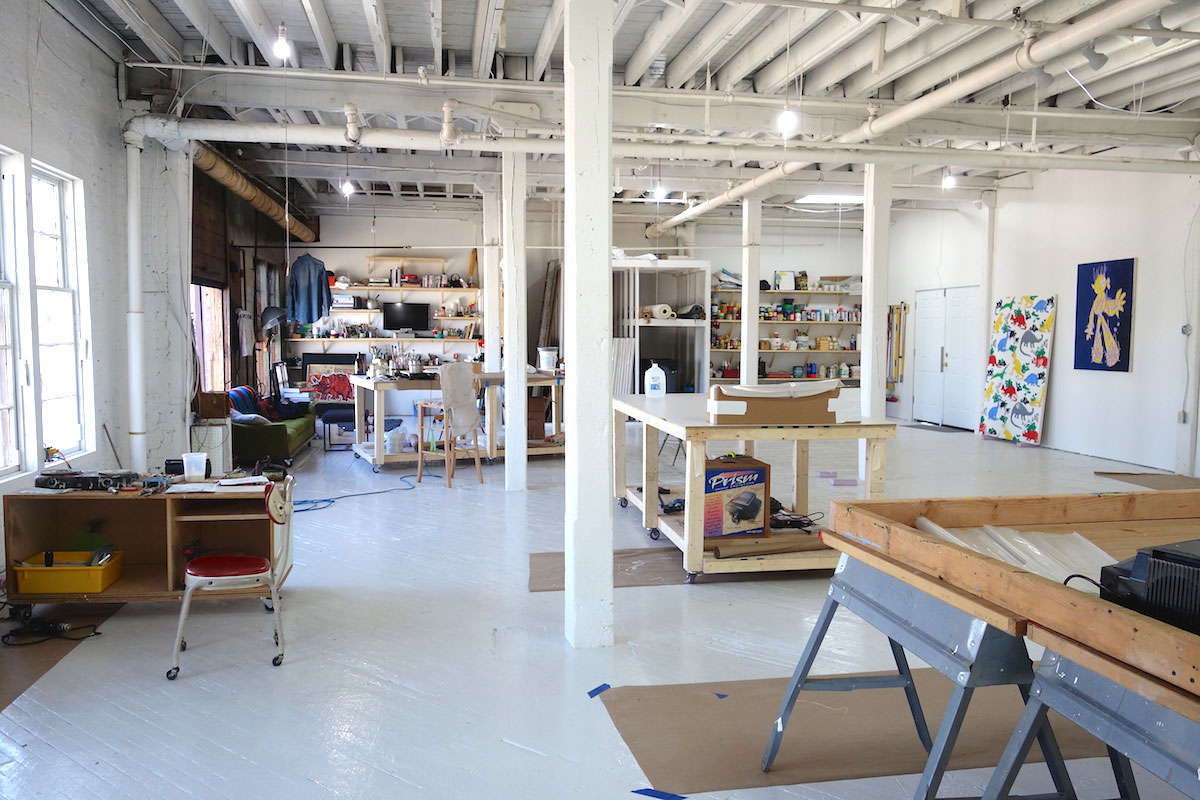
Armstrong shows his commitment to his hometown by constructing his studio there, which he built out with his own hands. Raised within the hardworking, homespun mentality of the Midwest, Armstrong was helping his father with house repair from a very young age, and eventually took a job in construction to support the son he had at 18. However, it was this same labor that eventually pushed him into the art world. “Life was just hell,” Armstrong says, “You just had to work your ass off all the fucking time. Finally I thought, ‘If I die just doing this stuff…’ I just can’t.” With that thought, he quit full-time construction at 21 to take his art more seriously. “I was broke for the first seven years,” recalls Armstrong. “Any money I would make I’d put right back into my art. It was hard.”
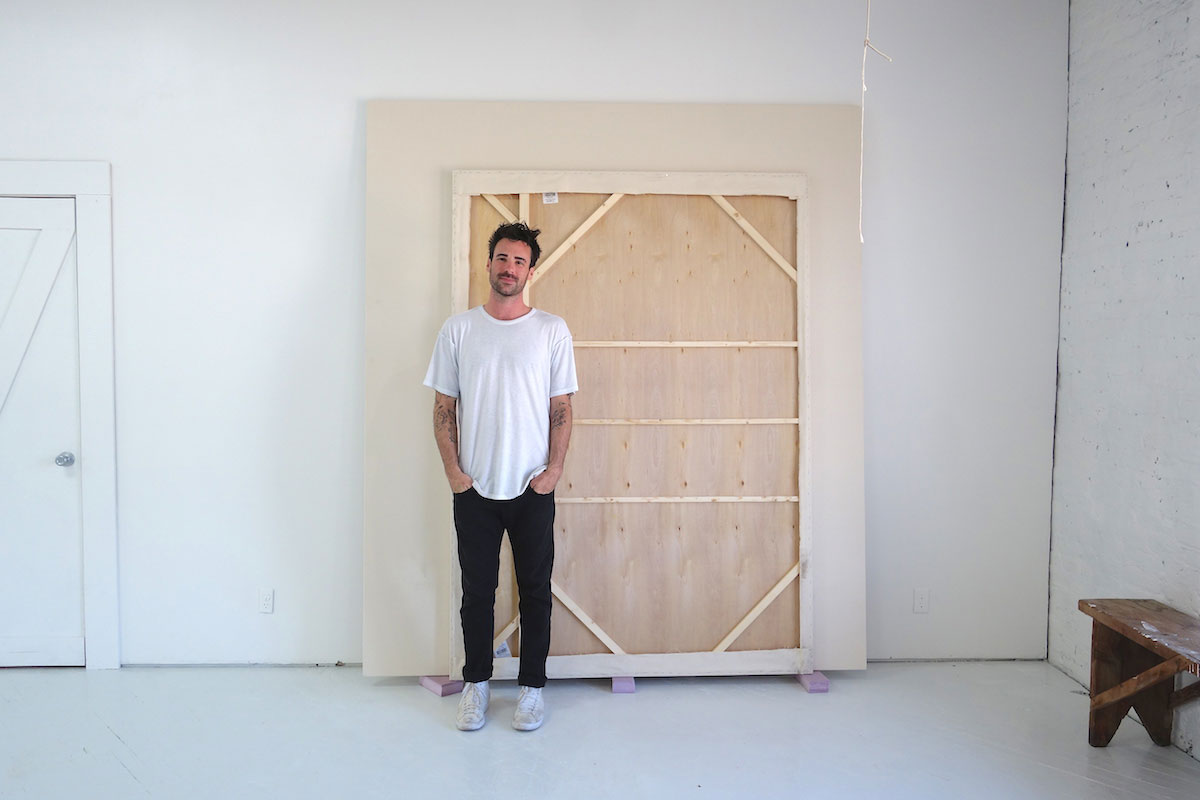
Being an artist outside of the so-called cultural meccas has definitely given Armstrong both the budgetary and literal space to build his repertoire, but it’s not without its drawbacks. “There’s really not much of an art scene in Dayton, it’s kind of a bummer,” Armstrong says. “And it’s obviously easier to get attention in a place like NYC, even just for the fact that you probably have friends that are working and showing.” As someone who enjoys testing his limits, however, Armstrong welcomes the challenge, saying, “You can make it anywhere these days, as long as you’re working your ass off and learning a lot. Plus, it’s nice to be away from the influence of NYC. My judgement doesn’t get cloudy here.”
Zach Armstrong will be showing at Miami Art Basel (4-7 December) as part of LA-based Night Gallery‘s exhibit at NADA Miami Beach (6701 Collins Ave, Miami).
Images by Karen Day
